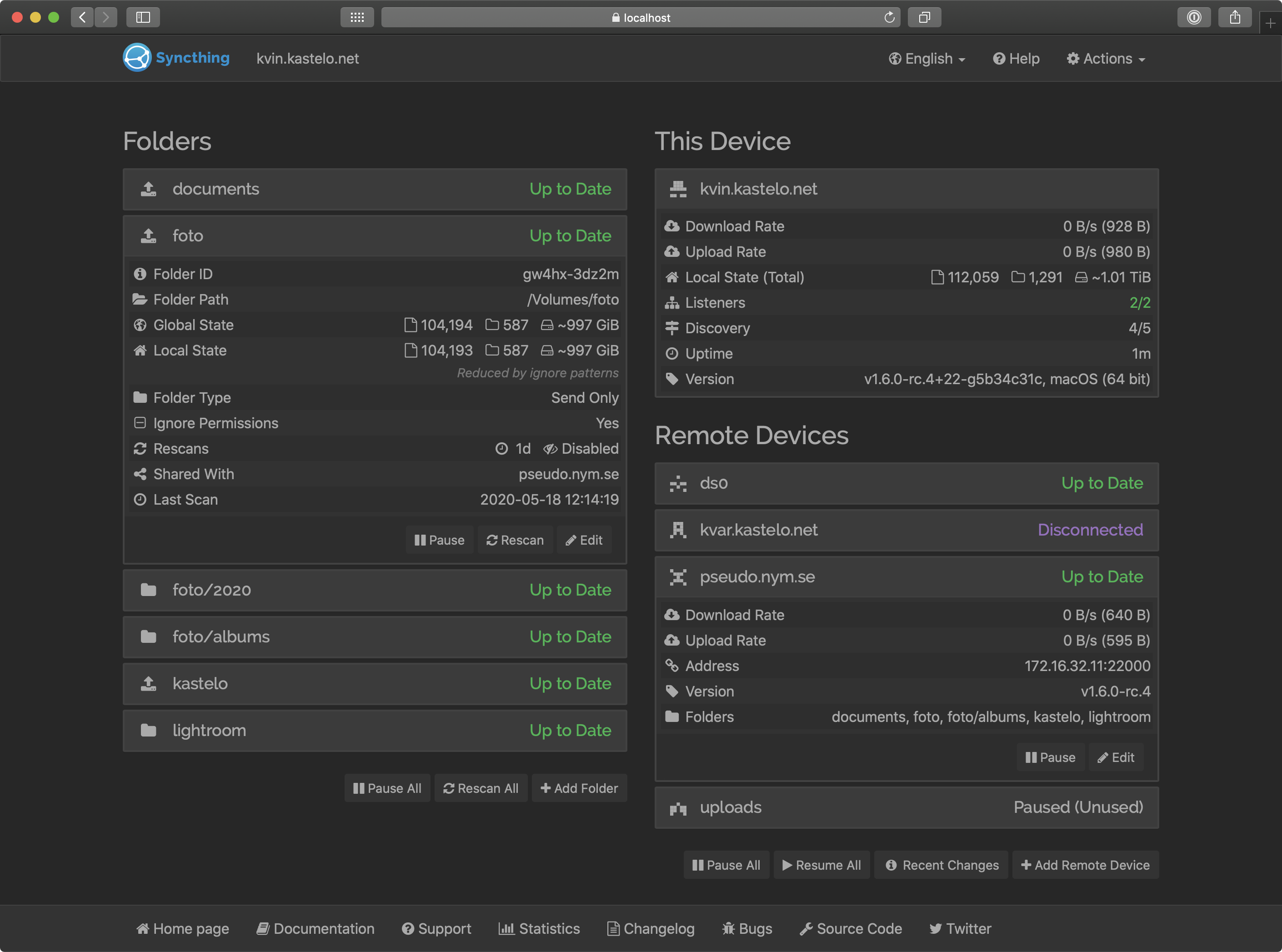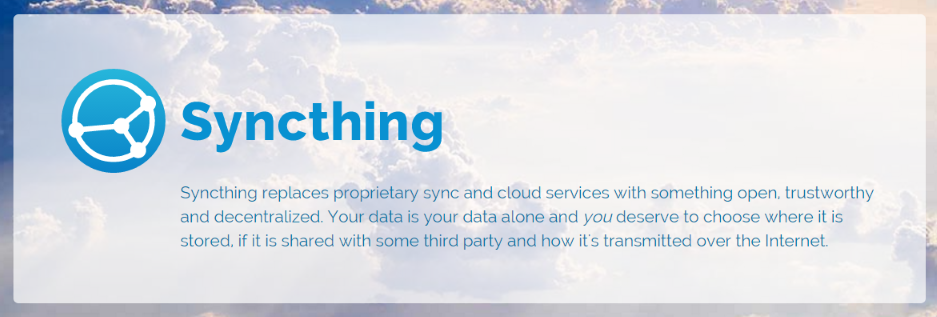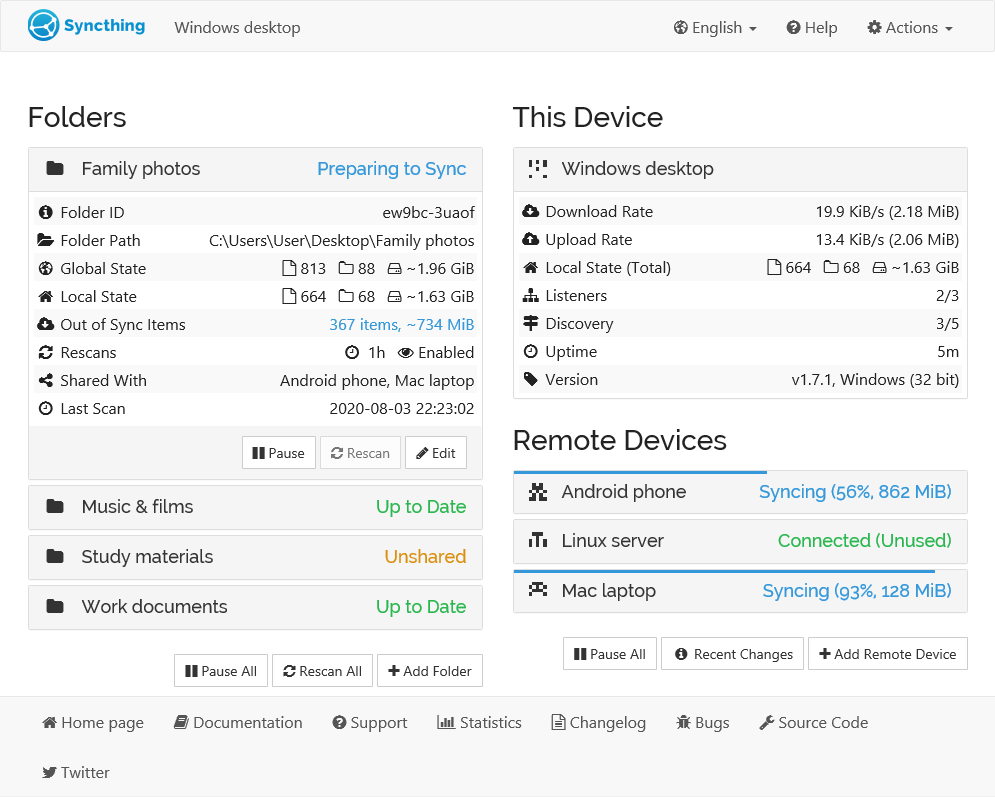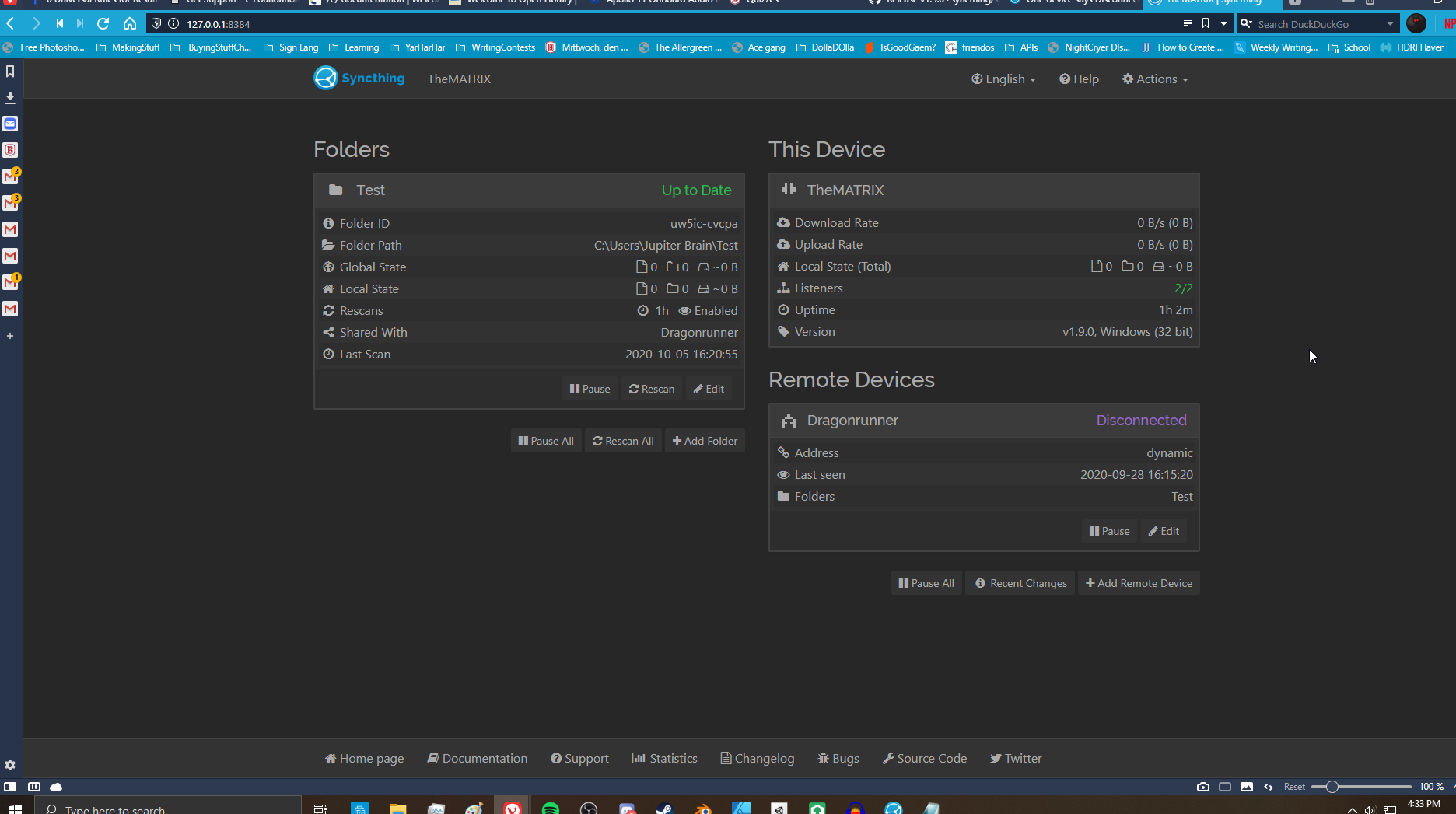
You can also set the actual 'Sync' directory to any location you like, too simply specify the path when selecting 'Edit' on the local device in the left-hand pane.Īs previously stated, when running multiple Puppies on the same machine, you can sym-link a single, remote instance of Syncthing into each Pup you wish to use it in, since, like the Electron-based WIRE VoiP app I discussed a few months ago, it's totally self-contained.along with sym-linking the binary into /root/Startup. Just remember to sym-link the 'syncthing' binary inside the folder to /root/Startup, to auto-start at boot. It could go in /usr/local /usr/lib /opt.anywhere at all, since it's totally self-contained very much along the lines of the Electron-based apps, which are starting to become more common. Upon further investigation, I've discovered I can sym-link the remote app into any directory I like to actually run it. As the years roll by, and you amass more and more in the way of files'n'stuff, so it becomes more imperative that you find ways of managing and organising it all. I've tried many file-syncing applications in the past, and never got on too well with them this, even a dunderhead like me can figure out.

It's all pretty straight-forward just takes a wee while to work your way through it. The website has a comprehensive FAQ and extensive documentation to help with any queries. I'm assuming the binary must be statically compiled, with all required dependencies built-in. It's available in both 32- and 64-bit versions, and, so far, has fired straight up in every Pup I've tried it in. After this, it's just differentially scanning & updating recent changes only. This can be safely ignored all will still function correctly.Īs with all sync apps, the hard work gets done the first time it runs. If you do decide to place it in /root (and have it set to auto-start), when the default browser opens up with the Syncthing page showing, you will get a discreet suggestion not to 'run as root'.

The 'Sync' directory will be created alongside it in the same parent directory, wherever you decide to place it. It contains everything needed for the app to run. Upon extracting the tarball, I've renamed the folder inside the extracted one to 'Syncthing' this is the one I've placed on sda1 (my remote data partition), and which has been sym-linked into each Pup. Even though I'm effectively running just a single instance of Syncthing, you still need to set things up for each individual Pup, as it recognises each one through a unique 56-digit encrypted 'identifier' ID.

Personally, I'm running this from my remote data partition, sym-linked into /root (/mnt/home would work just as well, to keep things outside of PuppySpace), with the executable binary within the Syncthing directory sym-linked into /root/Startup, for auto-starting at every boot. However, I thought this one might appeal to some of you, as it's highly configurable, and it's possible to manually set-up just about every aspect of its operation.which gives you very much greater control. It takes more setting-up than, say, 'ResilioSync' (formerly BitTorrentSync, which MakeUseOf compares it with), which is a paid app this has a GUI, and a lot of the settings are performed 'behind the scenes'.

There is apparently a GTK-based GUI available from the website I haven't, however, tried this, since the browser window is quite good enough for my needs. Syncthing doesn't use a separate desktop GUI just like CUPS in Puppy, you access it via the browser, on ' '. There will be a fair bit of CPU usage the first time around, as Syncthing gets everything 'matched up' after this, it will be fairly modest. You can sym-link other folders into this, as Syncthing respects hard links (except in Windoze). The first time you fire it up, it creates a folder alongside the 'Syncthing' directory, in which ever parent directory you've chosen to use, called, appropriately, 'Sync'. (So it's an 'old', proven formula re-deployed in a different way for an alternative desired outcome. In other words, all the work is performed by your own machine, and those you're connected to over the network there is no 'middleman', or remote, cloud-based server, as with, for instance, DropBox.
SYNCTHING DISCONNECTED TORRENT
It works via peer-to-peer, in very much the same way that torrent clients (such as Transmission) do. I was browsing this evening (as you do!), and came across a link from the tech site MakeUseOf to a new type of free, open-source file-synchronisation app, called Syncthing:. Upholding the Puppy maxim of choice, I give you the following.


 0 kommentar(er)
0 kommentar(er)
